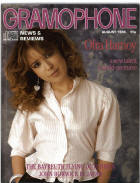Texte paru dans: / Appeared in: Code-barres / Barcode : 8435408099288
|
|||||||
|
Reviewer: Julie
Anne Sadie François Couperin flourished at a time of transition, when French composers were just beginning to assimilate outside influences, Italian in particular. He was one of the earliest (along with Charpentier, La Guerre and Rebel) to compose sonatas at the close of the seventeenth century. At first , nervous over their reception, he hid behind a pseudonym. He chose to call his first essays in the Italia n style sonades and , in the French tradition of pieces , gave them names. Some 30 years later, in 1726, "La pucelle", "La visionnaire" and "L'astree" (whence this recording company derived its name) were to become part of the published concerts entitled "La françoise " , "L'espagnole" and "La piemontoise" of Les nations. In the interim Couperin added new movements to make up complementary suites , as well as an entirely new sonade for " L'impériale" . In so doing he created a dichotomy within each of the four concerts that nevertheless masterfully demonstrates the fusion of French and Italian styles. (It is a pity that the notes here fail to provide movement titles for the sonades.) These are works of great sophistication, meant to be performed by accomplished and stylish players. A contemporary remarked of the early private performances that they lacked for nothing but good playing. Later, at Court, Couperin had fine musicians at his disposal; records from 1701-02 mention his playing chamber music for Louis XIV with well-known viol, theorbo, violin , flute and oboe players. Hespèrion XX , under the sensitive direction of the viol player Jordi Savall, use much the same forces, finely captured in this superb CD recording. Two aesthetic considerations weighed with French musicians when determining the instrumentation of music like this whose parts are marked merely first and second treble, bowed bass and harpsichord. One was variety within limited means , the other was a clear preference for particular combinations: flutes with viol and theorbo, violins with cello and harpsichord, oboes with bassoon . Older LP recordings such as those of Thurston Dart (L'Oiseau-Lyre) and the Quadro Amsterdam (Telefunken) have opted for the former consideration, Hespèrion for the latter. Except in "L'impériale" (which is played throughout by strings with lute and harpsichord), Savall tastefully combines and contrasts strings and wind . The entire ensemble is heard only in the quick movements of the sonades and the more extended rondeaux , chaconnes and passacailles; particularly effective is the dramatic concitato alternation of strings and wind in the passacaille of "L'espagnole". The instrumentation of "L'espagnole" is the most delightfully varied and , on the whole, this concert receives the best performance of all . The string playing from first to last is superb . Monica Huggett and Chiara Banchini play with great warmth and rapport. Jordi Savall is at his best, subtly influencing the tempos and breadth of phrases. He plays brilliantly throughout (especially in the sonades of "La françoise" and "La piemontoise" and in the allemande of " L'espagnole"), judging the varying importance of his part, the true sign of a maître de viole in this repertory . (The momentary groans and extraneous plucked strings during a very high passage in the passacaille of "L'espagnole" must surely represent someone's oversight.) When on their own, the strings tend to languish overmuch in the sighing gestures and poignant harmonies of the sarabandes. The ravishing allemande and gigue of "La piemontoise" also suffer from a lack of forward movement. This never happens, however, when they are joined by the exquisite flute of Stephen Preston, so assured in his command of dance (in the allemande of "La françoise", for example) .
The oboes (Michel Henry and Ku Ebbinge) with bassoon (Claude
Wassmer) and harpsichord are always in lively form . To them are given the first
courantes of " La françoise" and "La piemontoise". Less successful are the
movements in which, joined by the flute, they are accompanied only by the
theorbo : the resulting timbre is unsatisfying and the mixture of 'outdoor
instruments with an 'indoor' accompaniment is at odds with the aesthetics of the
time. The continuo playing is consummate: whether together in tutti movements or
alone, Ton Koopman and Hopkinson Smith provide stylish and sensitive
accompaniment. This is truly an ensemble of peers such as Couperin would have
approved. |
|||||||
|
|||||||
|
|
|
||||||
|
Cliquez l'un ou l'autre
bouton pour découvrir bien d'autres critiques de CD |
|||||||

/8435408099288_small.jpg)


